WHY CAMPING BY KAYAK CAN PROVIDE A GOOD ALTERNATIVE TO BACKPACKING
If you’re looking to try something a bit different on your next camping trip, I would recommend a paddle camping outing, specifically by kayak.
When our kids were young, my wife and I used to load up the family and head to one of our favorite destinations: Raquette Lake in New York State’s Adirondack region. There we’d paddle out to Big Island and stay in one of the lean-to’s that were available for free on a first-come basis. All it cost was the food we brought and the gas to get there. That was a big consideration for a growing family on a budget.
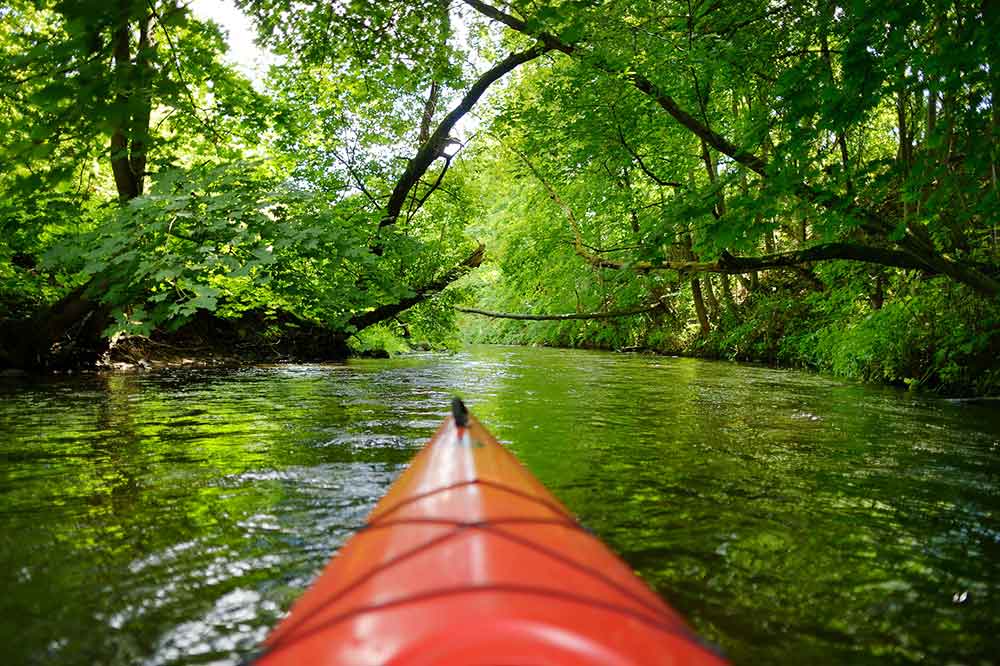
Because we had the three boys (our daughter wasn’t born yet), we had to use a two-person kayak and a canoe in order to carry everyone and all of our gear. It was a short paddle from the boat launch at Raquette Lake to the island, so the kids really didn’t have a chance to get bored.
It was very private and a very different experience than staying in a campground. It was always a great adventure for everyone in the family. We fished, did some sightseeing as we toured the lake, cooked great meals, and, as with parents on most campouts, got very little sleep. But we made some great memories.
I have a well-worn brochure squirreled away somewhere that details a multi-day paddle trip that takes you through several Adirondack lakes, including Raquette Lake. Now that the kids are grown, I’m going to make that trip someday soon. But I’ll opt for a single-person kayak for that adventure.
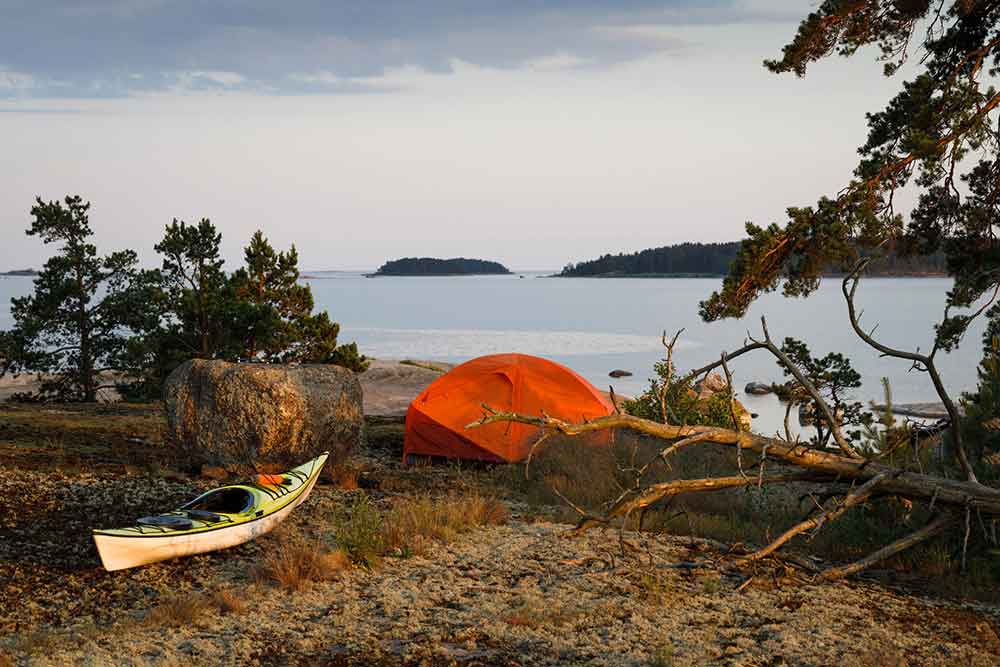
BIG ADVANTAGES
There are many advantages to traveling by kayak on a paddle camping trip. Here are my top 10:
1. Easy to lift. First, a single-person kayak is easy to lift onto the Thule carrier that attaches to the crossbars on my car’s roof rack, and it’s easier to portage if you need to do that between waterways. We still have a two-seater kayak, but it’s pretty much a two-person job to get it onto the car. I’ve found too that in most cases people enjoy paddling their own boats.
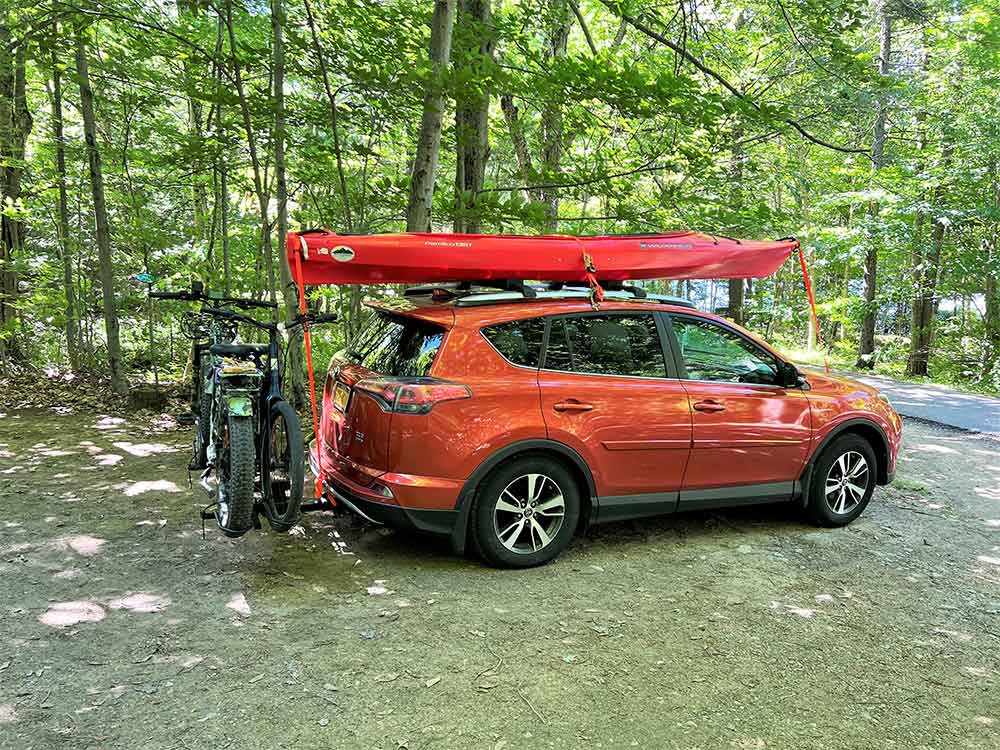
2. Just enough room. Our kayaks provide just enough room forward by our feet, and to the rear behind the seat to stow all the gear we need. Basically, you’re packing light, the same way you would on a backpacking trip, taking both the weight and the bulk of your gear into consideration. There’s a certain liberation in traveling light as you have everything you really need without being overly burdened by excess baggage.
3. Avoid the crowds or not. If you want a private, tranquil outing, there are plenty of lakes and rivers large and small that you can explore where you won’t feel like you’re walking down a crowded city street during a morning commute. Many campsites are primitive – offering no amenities – and that usually means you’ll run into fewer people. If you prefer a more social setting, many bodies of water have private or public campgrounds situated at the water’s edge.
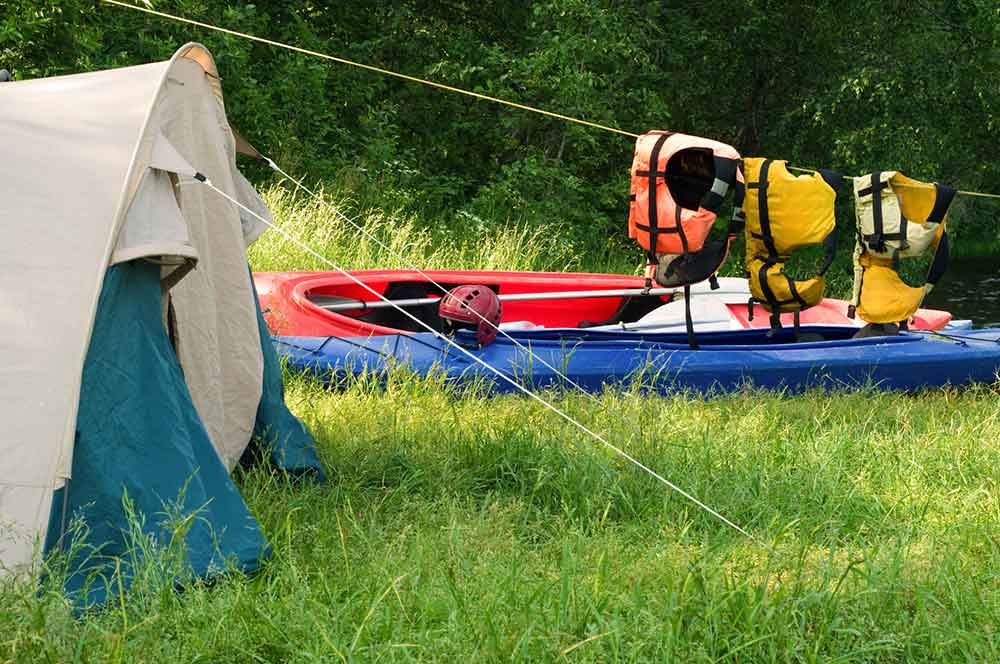
4. Built-in recreation. Paddling a kayak is recreation in and of itself. But you can fish out on the water as you paddle or fish from shore when you reach your camp and maybe catch your dinner. Depending on the location, there can be stunning scenery to view or exquisite waterfront estates to ogle. There can be wildlife to photograph too in the way of turtles, ducks, loons, otters, and sometimes larger animals that might come to the water’s edge for a drink. Moving slowly and quietly with a kayak, you can often get close enough that you won’t need a long lens.
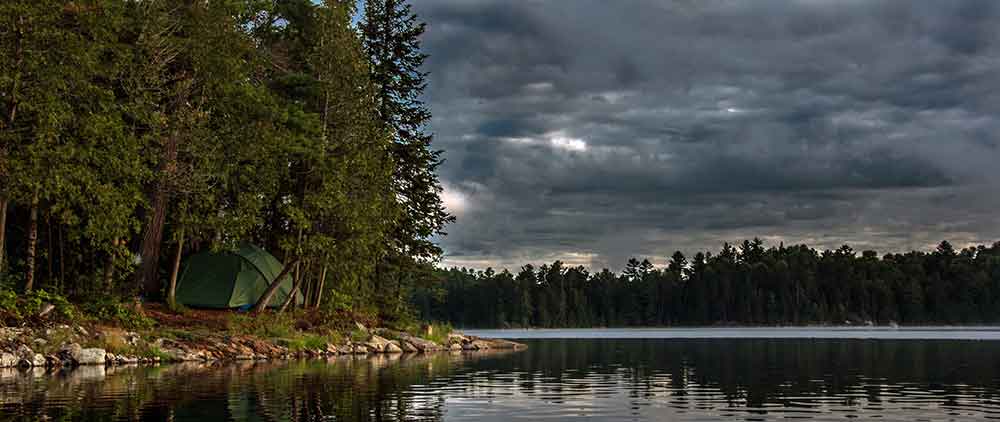
5. Easy on the budget. Kayaks can vary widely in price, but you don’t need an expensive model to get started. Some decent models are available for as little as $200. And once you purchase the kayak, paddle, and a life jacket, you’re done. There’s no fuel or other operating costs and there’s virtually no maintenance required other than rinsing it out once in a while. Take care not to drag it over hard surfaces and a kayak can last many years. We have one that’s more than 30 years old.
6. Easy to learn. Just about anyone can get moving in a kayak the minute they’re on the water. Remember, we’re not talking about whitewater kayaking here, so there’s not a lot of technical aspects to it. Not everyone gets the hang of how to paddle most efficiently right away, but most people find it easier to cruise along using a kayak’s double paddle than when using a canoe’s single paddle.
7. No hills to climb, nothing to carry. When paddle camping, your gear is in the boat and not on your back. There are no hills to climb and you can paddle and drift alternately to take it slow and easy if you don’t feel like exerting yourself. Even if you must portage, often you can use a set of strap-on wheels to make that task much easier. If age, injury or other infirmity limits your ability to go backpacking, you might still be able to camp by kayak.
8. Go places larger boats can’t. It takes very few inches of water to float a small kayak and you have no propeller to become tangled with weeds. That enables you to explore places larger watercrafts can’t go. You still must watch for downed tree branches and rocks in the shallows, but even if you have to get out and pull the kayak as you wade a short distance, it’s usually not much of an imposition.
9. Try before you buy. Many shops, especially in tourist destinations, will rent kayaks. That’s a good thing if you’re unsure of the whole idea and don’t want to commit yet to a purchase. It’s also handy if you’re vacationing in the area and decide on a last-minute overnight or day trip, but you haven’t brought your own kayak with you.
THE WATER AWAITS
With a bit of research you’ll find there are many new places to explore that can greatly expand your outdoor adventure possibilities far beyond the same old hiking trails and bike paths you’ve traveled so often. In these days of high prices, it’s good to know too that paddle camping can be an affordable option compared to other forms of travel recreation.
“…you’ll find…many new places to explore that…greatly expand your outdoor adventure possibilities far beyond the same old hiking trails and bike paths…”
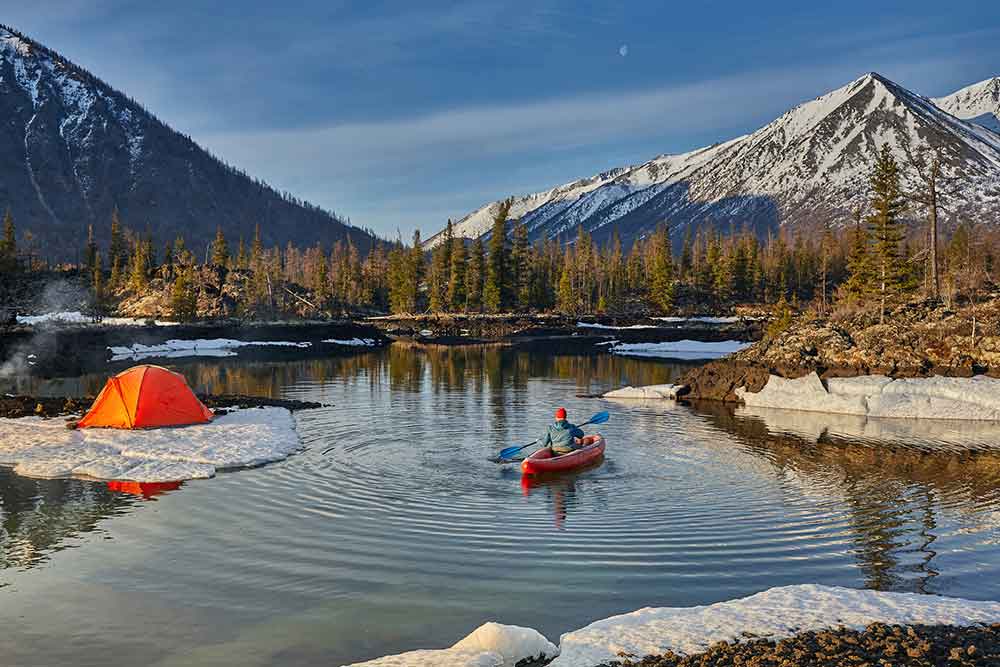
NECESSARY PRECAUTIONS
1. Know the water. Do your research before you hit the water. Will there be rapids or dams? Where are the access points? Will you need to portage between bodies of water? Are there lean-to’s, primitive campsites or campgrounds along your route? While paddling with my son in Griffin Lake, Florida years ago, we were continually surrounded by alligators, some of which followed us for an unsettling amount of time.
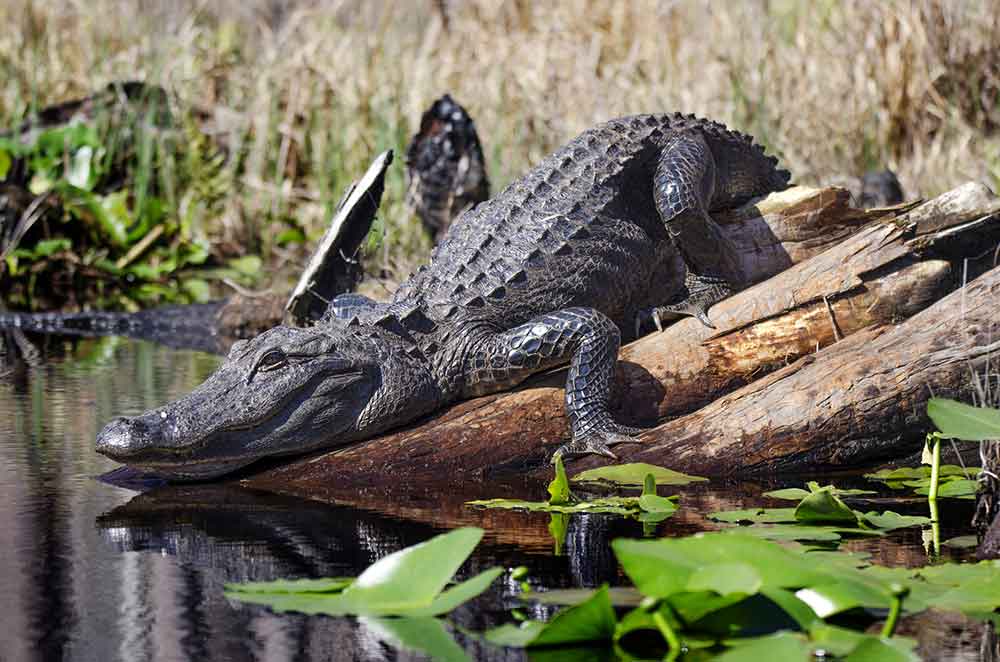
2. Know your capabilities. Do you know how far you can reasonably travel in one day? Find out before you go. That distance can be reduced drastically if you are paddling against the current or strong winds. Start with several day trips, then a short paddle with an overnight stop before you tackle a multi-day wilderness journey.
3. Don’t overload the boat. Know the total weight capacity of the boat and don’t go over it. If your overloaded kayak is riding low in the water and you’re hit broadside by the wake of a speeding motor boat, all could be lost, including your life. Take waves head-on, not broadside.
4. Wear a lifejacket. Even if you’re a strong swimmer, you can get in trouble quickly if the water is very cold, you hit your head on a rock as you capsize, or your kayak drifts away from you in the middle of a lake. Many people drown every year because they think this doesn’t apply to them.
5. Let others know. Make sure others are aware of where you’re going and when you’re expected to return. Have an emergency plan. You might be beyond cell phone service and it’s hard to make a call if you’re phone sinks to the bottom of the lake.
6. Have a Plan B. Lean-to’s and primitive campsites usually go to those who arrive first. If your intended campsite is taken, have a backup plan. Leave yourself some daylight. You don’t want to try to paddle miles in the dark to another campground.
7. Be able to navigate. At a minimum, I always try to have a compass and a map with me. Fold the map with the area you’re paddling visible and put it in a sealable plastic bag. You don’t want to be folding and unfolding a paper map in the middle of a breezy lake. If I’m exploring after setting up camp, I’ll often mark my campsite as a waypoint on my GPS unit so I can find my way back easily without having to cruise the entire shoreline hoping I can find my campsite before dark.
WHAT YOU NEED
There isn’t much you need to begin a kayak adventure.
1. Kayak and paddle. A single-person polymer kayak that’s about 9 ½ feet long and weighs about 40 pounds is about ideal. Know that a short kayak will turn quickly in tight spaces, but it will take more effort to keep it tracking in a straight line. It’s easier to store your gear in a sit-in kayak and to keep it dry than it is in a ride-on-top model. I would highly recommend a model with adjustable foot pegs too, as you’ll need to brace your legs to paddle most efficiently.
2. Time on the water. There is no substitute for experience. Don’t tackle a big paddle camping challenge until you have a good amount of time handling your watercraft without it loaded with gear.
3. Dry bags. Trash bags come in handy and early on I wrapped and double-wrapped all my gear in them. But they can tear easily and don’t seal well. Dry bags are a better alternative or use both if that puts you at ease. Electronics – cell phone, GPS unit, battery packs – I put in LokSak double-seal plastic bags.
4. Regular backpacking gear. Packing for a paddle camping trip is very similar to packing for a backpacking trip, except you don’t want to use a rigid frame pack that would be hard to stuff into the small spaces of a kayak. You still need food, a water container, cook kit, etc. You will want to bring some extra clothes too. Because you’ll be around water, obviously there’s a chance you’ll get wet. Bring a jacket too. You’ll be warm while paddling, but are likely to be chilled around camp at night.
“Packing for a paddle camping trip is very similar to packing for a backpacking trip, except you don’t want to use a rigid frame pack…”
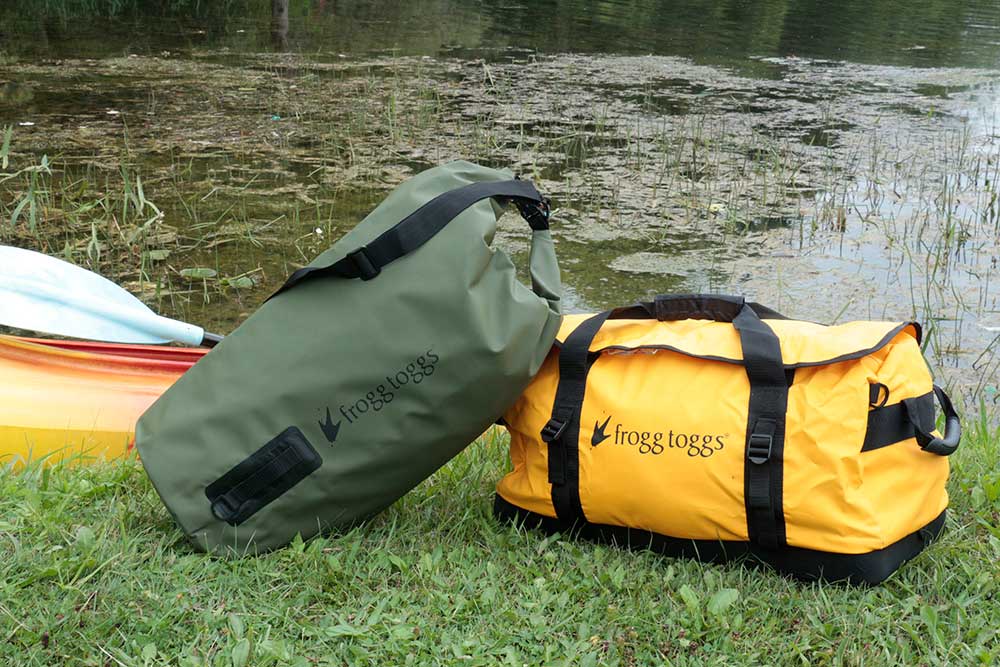
5. Portage wheels. These are only necessary if you have a long way to go from your car to the water’s edge or if you will be facing a portage between waterways during your trip. They strap onto the kayak and at the balance point or can be moved slightly forward or rearward depending on if you’re moving mostly up or down hill.
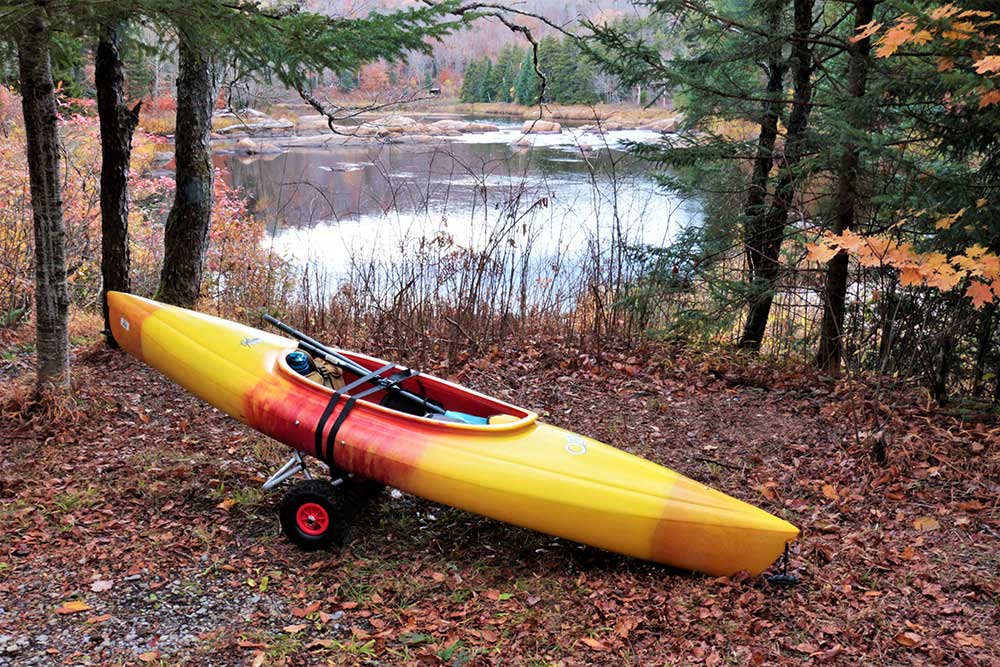
FIND YOUR DESTINATIONS
A little online research can provide you with many likely paddle camping travel destinations. Good bets to start your search are state conservation department websites. The New York State Department of Environmental Conservation site (www.dec.ny.gov) for instance, provides ideas on places to go, facilities you’ll find, maps, fishing regulations, campgrounds, boat launches, picnic spots, and much more.
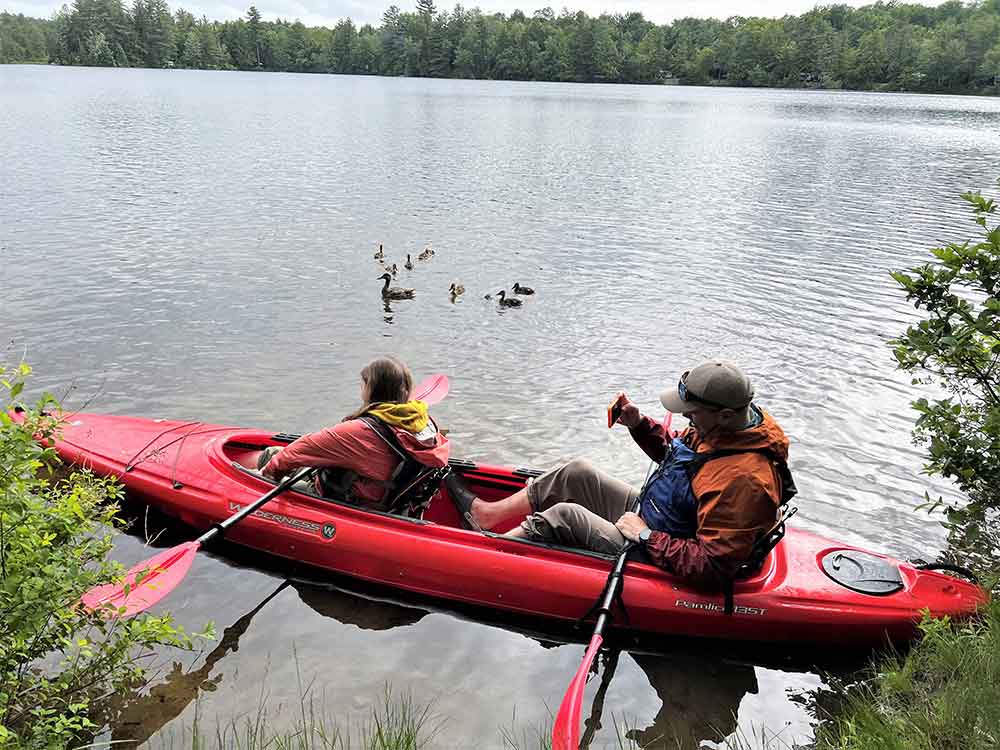
Don’t overlook federal sites, either. The National Forest Foundation has a post on its website detailing 14 of the best places to canoe and kayak in national forests. I went on the National Park Service website, searched “paddle camping” and the result was several pages of links to information on canoeing and kayaking opportunities in the national parks.
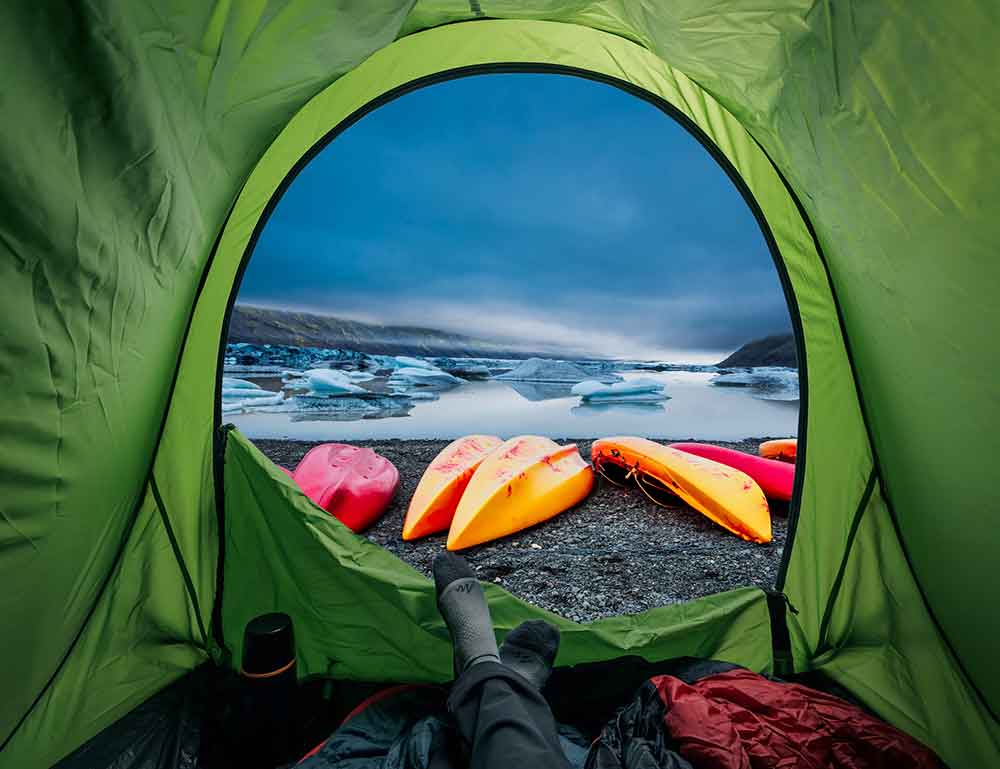
SOURCES
Old Town
www.OldTownCanoe.com
Pelican
www.PelicanSport.com
Perception
www.PerceptionKayaks.com
Wilderness Systems
www.WildernessSystems.com
A version of this article first appeared in the August 2022 issue of American Outdoor Guide Boundless.

